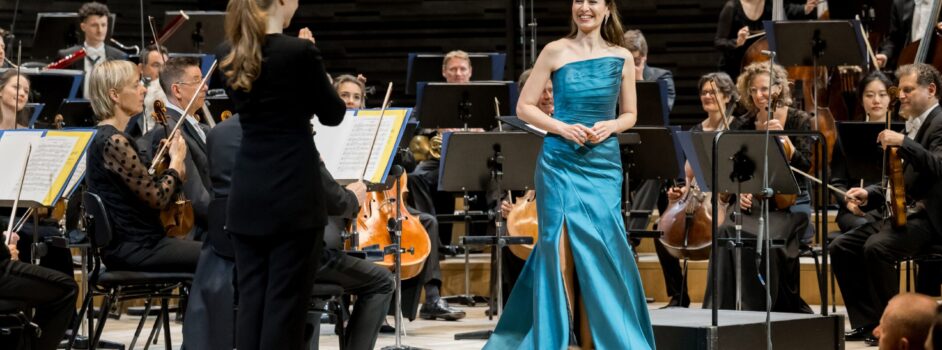Nikolai Alexeev conducts all-Shostakovich program with the Estonian National Symphony
Plus de détails
21.III-2014. Tallinn, Estonia Concert Hall. Dmitri Shostakovich (1906-1975): Suite from Korzinkina’s Adventures (arr. Rozhdestvensky). Symphony No. 4, Op. 43. Estonian National Symphony Orchestra. Nicolai Alexeev, conductor.
According to the marketing materials for this concert, this program featured the “two faces” of Shostakovich. In the suite from Korzinkina's Adventures we find Shostakovich at his most light-hearted and witty, while the Symphony No. 4 shows a much more serious side of the composer. On the podium was Nikolai Alexeev, the former chief conductor of the Estonian National SO.
The program opened with a brief six-movement suite derived from Shostakovich's film score for the comic film Korzinkina's Adventures. While the Shostkovich of the symphonies and chamber music is usually quite serious, here is Shostakovich having unadulterated fun. We hear a brass band playing a jolly dance, suitable for a president's ball. A four-hand piano solo accompanies what could be a saloon scene from a silent Wild West film. The final movement features the chorus and strings in a tender denouement. This music is sneaky, sly, and even a little dirty (take the hulking and vulgar tuba solo, for example).
Along with Lady Macbeth of Mtsensk, the Symphony No. 4 was one the last works Shostakovich wrote before the infamous Pravda article, after which Shostakovich's music took a necessary turn in direction. The overall structure of the symphony is unique: two massive outer movements of approximately 25 minutes each, flanking a brief intermezzo-like central movement. While Shostakovich explores a whole world of moods in this piece, this work could ultimately be described as tragic.
Nikolai Alexeev adopted generally slower tempos in his interpretation, which provided additional clarity in some sections. For example, following the dissonant and piercing factory whistle opening, Alexeev's tempo allowed the unison upper woodwinds to register with greater incisiveness, while making the chugging strings which follow sound even more cold and mechanical. The wild and frantic fugue for strings was also taken quite slowly, which illuminated the overall harmonic motion of this section and allowed each pitch to be clearly defined.
Although it could be argued that this work is one of Shostakovich's most creative symphonies, the length of the outer movements sometimes requires tempos which provides a clear sense of forward direction, which did not always occur at Alexeev's broad pace. While still effective, the entrance of the percussion after the rapid string fugue in the first movement seemed more like a slow steamroller juggernaut as opposed to a rapid storm.
The strings and percussion were the highlights of this performance. The lower strings played with incisiveness and conviction, while the tight ensemble of the percussion (at the opening in particular) was memorable. Unfortunately, the brass did not play with the necessary confidence required for this often violent and (dangerously) loud piece. The horns, in particular, were lacking in power.
One of the most profound concert experiences in all of classical music is the silence which follows the conclusion of this massive work. In the final minutes, chugging basses, playing the same rhythm in the conclusion to Tchaikovsky's Symphony No. 6, coldly lead the music into darkness. Woodwinds play quasi major-minor resolutions, suggesting Mahler's Symphony No. 6. A chilling celeste solo is heard over an protracted C minor chord in the strings.
Surpringly, after the strings and celeste faded away, Alexeev immediately closed his score, giving the audience permission to applaud. Unfortuantely, missing out on this silence robs the listeners of much of the tremendous impact of this piece.
Plus de détails
21.III-2014. Tallinn, Estonia Concert Hall. Dmitri Shostakovich (1906-1975): Suite from Korzinkina’s Adventures (arr. Rozhdestvensky). Symphony No. 4, Op. 43. Estonian National Symphony Orchestra. Nicolai Alexeev, conductor.






